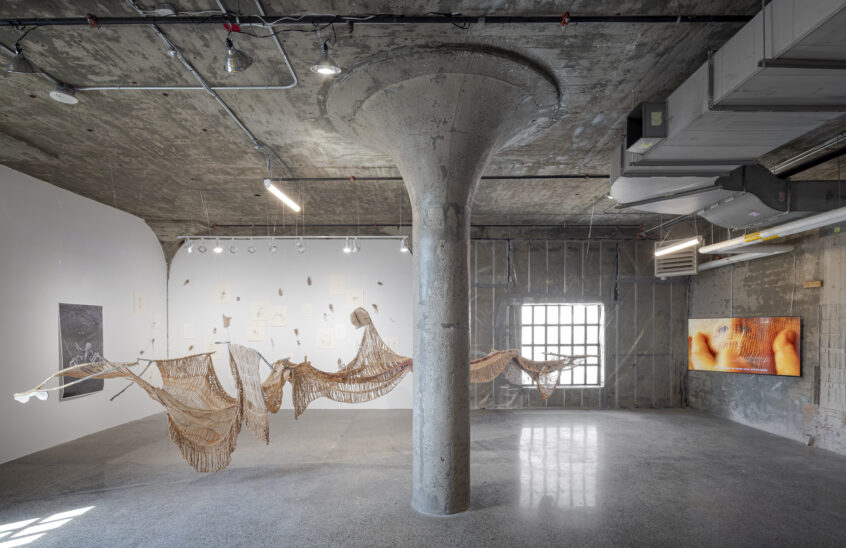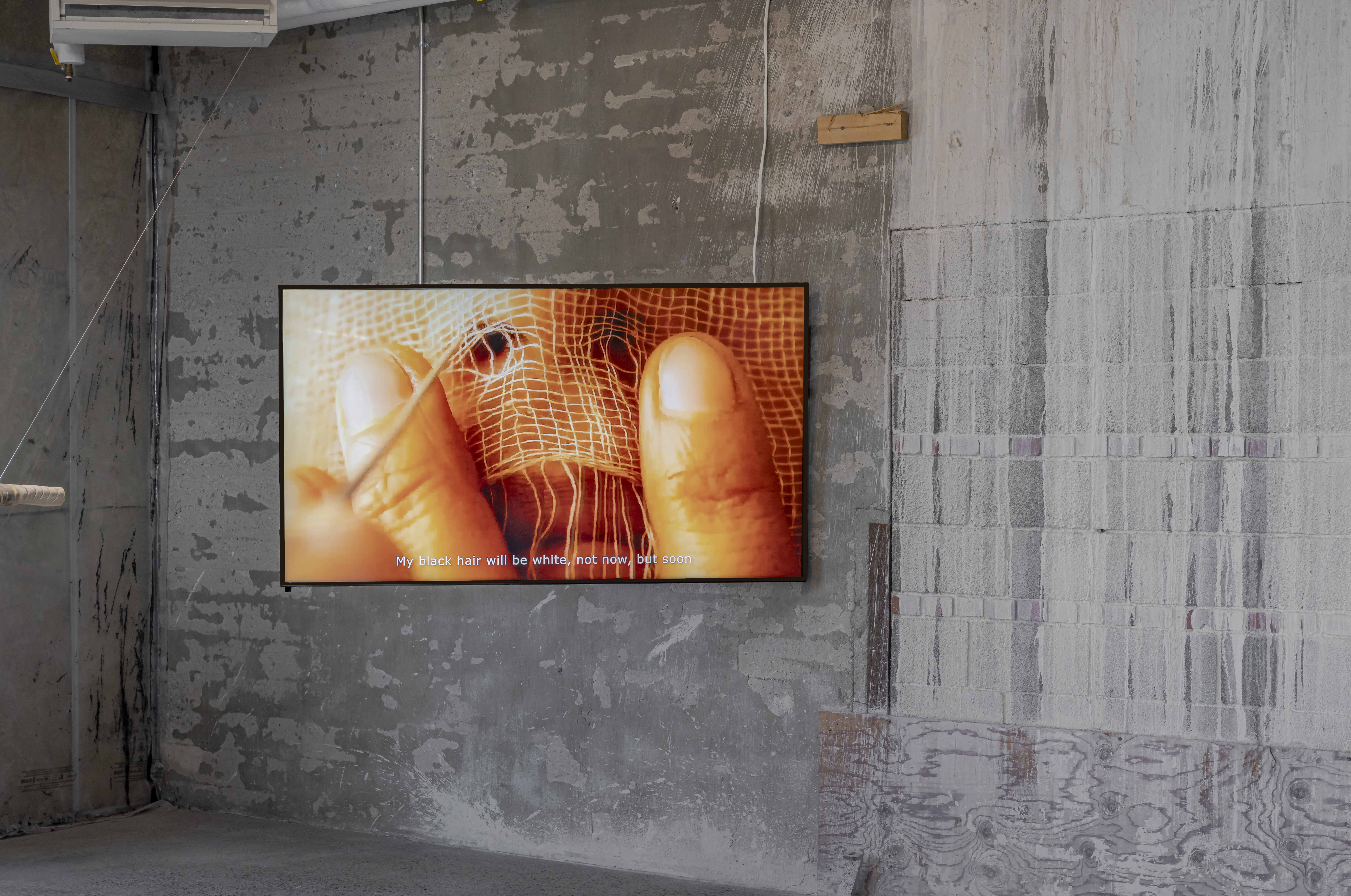September 21 – December 1, 2024
The Auto BLDG, 9th Floor
Acariciar el corazón del hueso (Caressing the heart of the bone) (2023-2024) is a newly commissioned sculptural loom-altar that combines wooden pieces, fabrics, and needles. The project is a response to a dream in which Cristina envisioned herself having a tactile conversation with her bone marrow. The dream was inspired by a time when the artist was advised to undergo a bone marrow biopsy as part of a cancer diagnosis examination. Through this installation, the artist reflects on her personal experience with illness, treatment, and recovery, delving into how modern medicine shapes our understanding of health and identity.
The sculpture consists of warp threads attached to hand-carved wood beams that resemble different parts of the artist’s body, such as legs, breasts, arms, and head. These elements symbolize memory bones and fibers, allowing the artist to articulate and rewrite her own story. Accompanying this self-portrait altar are other works, including fibers and gauze dyed with medicinal plants that the artist consumes daily, as well as drawings and a photograph of the artist activating the loom.
The installation also includes the video Diario [Diary] (2022). In the video, the artist wears a semi-transparent veil over her face and slowly opens the warp and weave of the threads in front of her facial orifices using a handmade silver needle. The deliberate, slow movements convey a sense of disturbance, as if the artist is trying to free herself from the medical gauze to see, smell, speak, taste, and feel again. The accompanying music, composed by the violinist and multimedia performance artist Pauchi Sasaki, features the artist’s voice recounting a story accompanied by sharp sounds of a violin and subtle noises recorded during the manipulation of plants, ceramics, and needles. The narration focuses on the artist’s skin, her experience with cancer and chemotherapy, and her relationship with death.
The exhibition includes a new work commissioned by the Toronto Biennial of Art. The presentation is made possible with the generous support of the Consulado General del Perú en Toronto and the Women Leading Initiative.
Bio

Artist Bio
Cristina Flores Pescorán
Cristina Flores Pescorán (1986; ella/her/she) is a multi-disciplinary artist from Perú. Her work is a dialogue between her body, healing processes, medical experiences, family memories, and feminism. Reflecting on her own experience of sickness, treatment, and recovery, Flores Pescorán employs a wide range of mediums in conversation with pre-Hispanic weaving, and dyeing techniques using medicinal plants that are part of her daily diet. She incorporates hand-made gauzes inspired by the Chancay culture (a pre-Inca civilization developed between 1200AD and 1470AD), whose reticulated veils are believed to have had magical powers used for healing and protection. Through her practice, Flores Pescorán reflects and challenges what we understand as illness, death, cure, nutrition, pleasure and magic in our contemporary society.
Exhibition Site

The Auto BLDG, 9th Floor
158 Sterling Road, 9th Floor
Toronto ON
M6R 2B7


